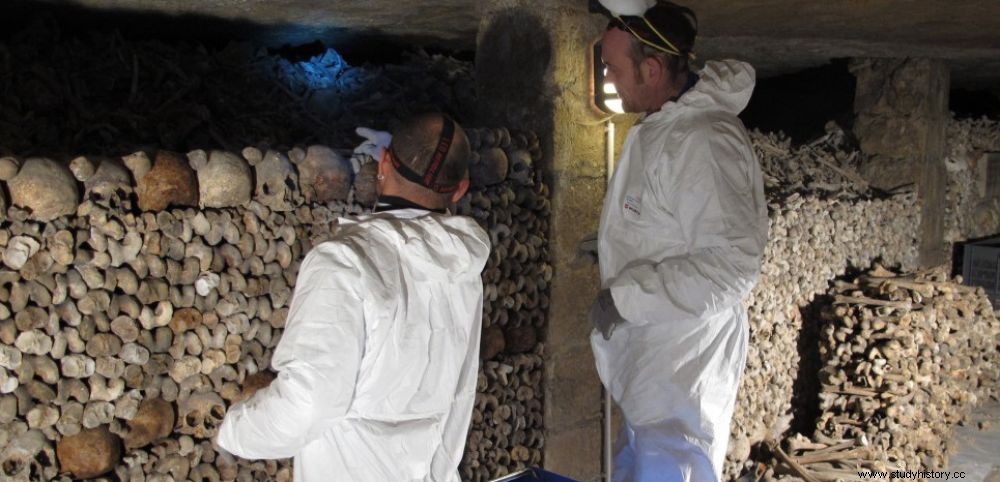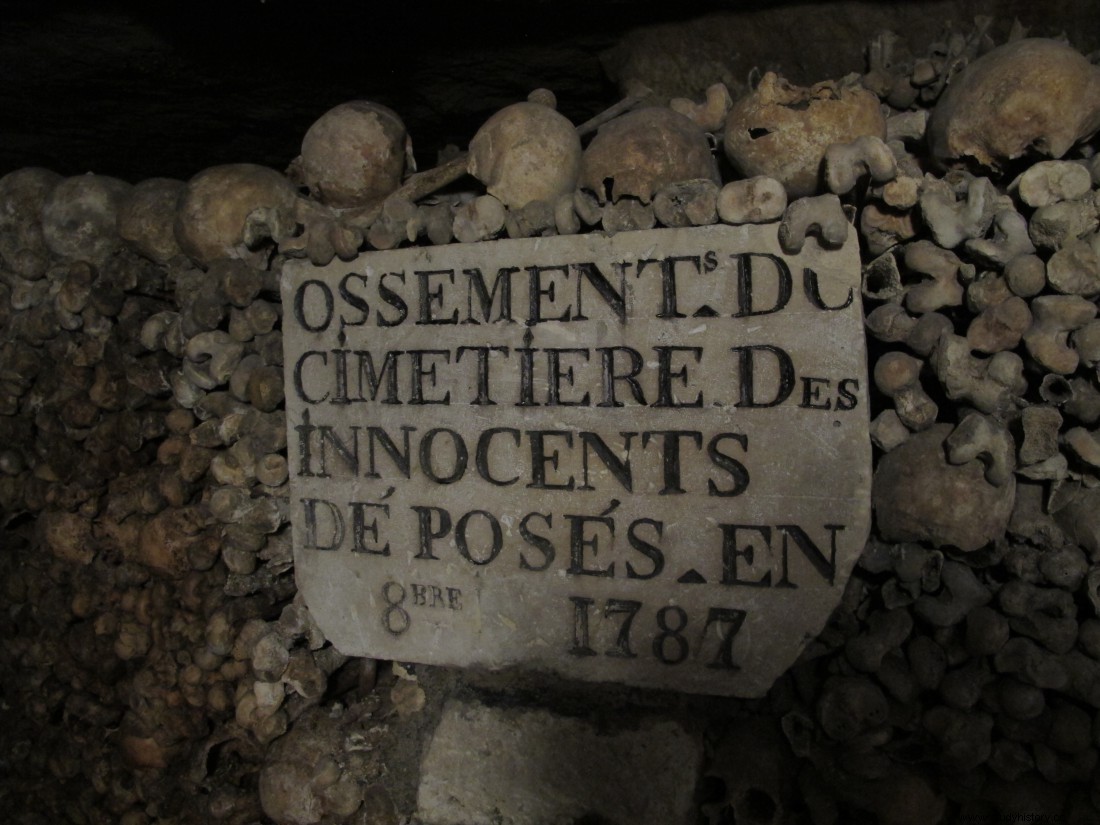New release, new shop, and above all, walls of consolidated bones:from April 1, 2017, visitors to the catacombs will benefit from the first phase of renovation of this mysterious Parisian museum.

Restoration of bone walls in the Catacombs of Paris.
Saturday April 1, visitors to the catacombs will be able to discover a new outlet and a new shop at 21 bis avenue René Coty. Installations carried out respectively by the Yoonseux architectural agency and the Arteum bookstore operator, under the sign of light, with the desire to mark the return to life after 3/4 hours of macabre wandering. It is the reception which will now be redesigned with a redevelopment of the pavilion carried out by Claude Nicolas Ledoux in 1787, which adjoins the current access. The tour route has also been shortened and the bone walls partially restored (read our report below). Finally, to avoid queues:the catacombs are now open until 8:30 p.m. and it is possible to buy skip-the-line tickets in advance.
OSSUARY. "What bones, what bones!" These are tens of thousands of bones that make up, over more than 700 meters of galleries, the famous Catacombs of Paris, located 20 meters deep under the district of Denfert-Rochereau, in the 14th arrondissement. "Hagues" (hedges) - word of Viking origin - composed only of skulls, femurs and tibias. "This is the empire of the dead" , warns the engraved lintel at the entrance to this underground world which fascinated Victor Hugo, Alexandre Dumas… and continues to attract more than 500,000 visitors each year. A city populated by ghosts whose macabre walls Parisians and tourists have been able to admire for more than two hundred years (1809), the date of its inauguration. "This ossuary is the most visited municipal museum in Paris. It occupies barely a tenth of the 800 hectares of underground quarries located under the city and with which it is often confused ", explains Sylvie Robin, Chief Heritage Curator, in charge of the Catacombs.

Lintel indicating the first deposit of bones in the Catacombs, that of the cemetery of the Innocents, in 1787. © Bernadette Arnaud
RESTORATION. Twice a year, its teams restore part of the bone walls to maintain this fragile, centuries-old building. It was in fact in 1786 that the decision was taken to collect the bones from the tombs and mass graves in these underground galleries from which, since the Middle Ages, the stones had been extracted to build Paris. It was then a question of dealing with the saturation of Parisian cemeteries and the problems of insalubrity generated by the decomposition of the thousands of corpses buried in the mass graves. In particular, those of the Innocents cemetery, the first to be evacuated, before other cemeteries in the center of Paris.

Site of the "Sepulchral Lamp". In the 19th century, this oil lamp was used to cause drafts. The hot air released by the flame caused air movements in all the galleries. © Bernadette Arnaud
HUMIDITY RATE. "Give me a shin! ", one of the restorers shouts to his colleague, finishing up one of the macabre walls. "This bone material is very fragile , confides the person in charge of the place. With its excessively high humidity, the climate of the ossuary is in fact quite incompatible with its conservation" . Hence the installation on all the galleries of stone foundations to prevent the bones from being in direct contact with the damp ground. "We also make a mesh of bones that allows air to circulate between the organic remains" , continues the curator. An "ossuary within the ossuary" has even been created to collect the most ailing bones.
Concentrated, the restorers carefully select the femurs and skulls which will be exhibited to the public according to an alignment reproduced identically since the origins of the site. These walls conceal in the background the presence of millions of bones deposited in bulk over a depth of 3.50 m, and embankments left by the quarries "which in fact occupy half the volume", adds Sylvie Robin.
